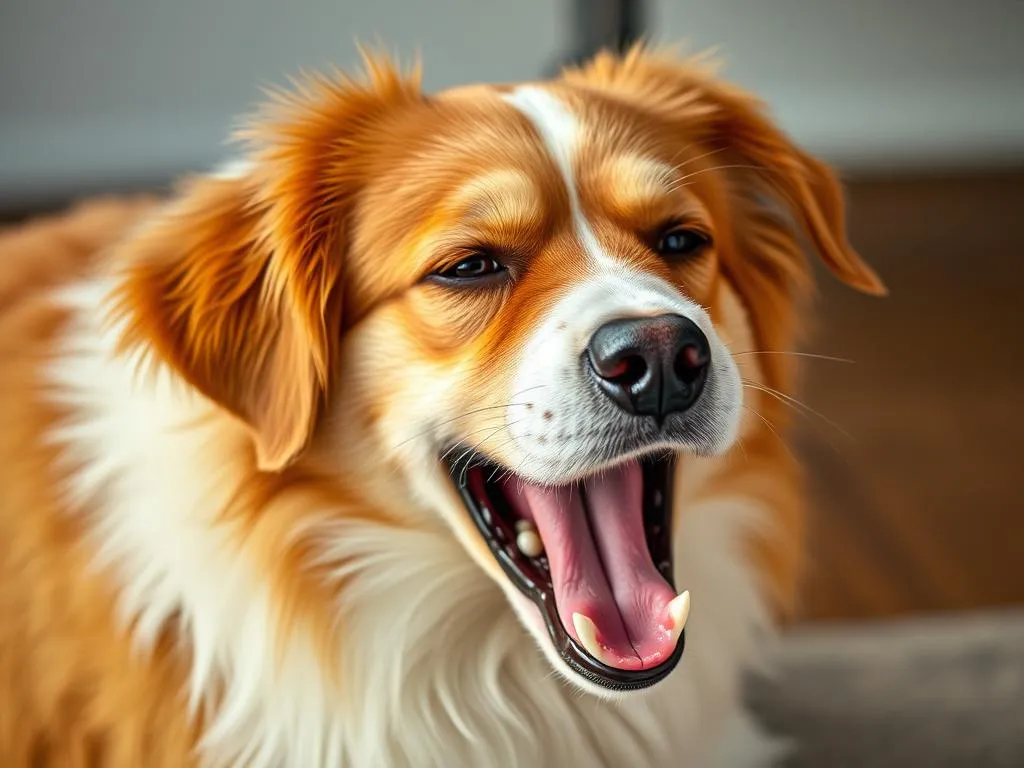
Understanding our furry companions can sometimes feel like a puzzle. One common behavior that often leaves dog owners curious is the act of yawning, especially when their dogs are being petted. Why do dogs yawn when you pet them? This phenomenon is not just a simple reaction; it has layers of meaning tied to canine communication, relaxation, and even social bonding. Let’s delve into the intricate world of dog behavior and uncover the reasons behind this intriguing action.
Understanding Dog Behavior
The Nature of Canine Communication
Dogs are incredibly expressive animals, and their communication extends far beyond barks and growls. They rely heavily on body language and non-verbal cues to convey their feelings and intentions. From wagging tails to raised hackles, each gesture can tell us something significant about their emotional state.
Yawning is one such non-verbal cue. Dogs often use it to communicate with each other and with humans. Understanding these signals can enhance our relationship with them, making it vital for pet owners to recognize the subtleties of canine communication.
The Role of Yawning in Animals
Yawning is a common behavior in many species, including humans. While it’s frequently associated with boredom or tiredness, in animals, it can signify various states including stress, relaxation, or even a social signal.
In dogs, yawning can serve multiple purposes. For instance, it might indicate that the dog is ready to sleep, but it can also act as a stress relief mechanism. Observing yawning in different contexts among various animal species reveals a complex interplay of emotional responses and social interactions.
Reasons Dogs Yawn When Petted
Relaxation and Comfort
One of the primary reasons why dogs yawn when you pet them is related to relaxation. Petting can induce a calming effect, especially when a dog feels secure and comfortable in its environment. The rhythmic motion of petting can help lower stress levels, prompting the dog to yawn as a sign of contentment.
When a dog yawns in response to being petted, it may be experiencing a release of tension. This behavior often indicates that the dog is at ease and trusts the person who is petting it. Dogs are highly intuitive and can sense the emotions of their human companions. If you’re calm and relaxed, your dog is likely to mirror those feelings.
Stress Relief and Anxiety
Conversely, yawning can also be a response to stress or anxiety. Dogs can experience stress in various situations, whether it’s from a loud noise, unfamiliar surroundings, or even during a visit to the vet. When you pet a dog that is feeling anxious, it might yawn as a way to cope with the heightened tension.
This yawning behavior serves as a release valve for pent-up stress, helping the dog to calm down. Recognizing the context in which your dog yawns is crucial; it can indicate that the dog is either settling into a relaxing moment or managing its stress levels.
Social Bonding and Affection
Yawning can play a role in social interactions among dogs, as well as between dogs and humans. When a dog yawns in response to your petting, it may be a way of communicating trust and affection. Yawning can be contagious, and this social aspect of yawning reinforces bonds within social groups.
In essence, when your dog yawns while being petted, it could signify a deeper connection and a sense of belonging. This behavior is especially prominent in dogs that have developed a close relationship with their owners.
The Science Behind Yawning
Physiological Mechanisms of Yawning
The act of yawning is not merely a behavioral response; it also involves physiological processes. Yawning typically occurs when a dog takes a deep breath, often leading to an increase in oxygen intake. This can help in cooling the brain and enhancing alertness.
In dogs, yawning is connected to the regulation of brain temperature. When a dog yawns, it helps to ventilate the lungs and increase the flow of oxygen, which can be particularly beneficial during moments of relaxation or stress.
Studies on Yawning in Dogs
Research into yawning in dogs has provided fascinating insights. Studies show that dogs yawn in response to their owners yawning, indicating a level of empathy and social awareness. This phenomenon highlights the bond between dogs and humans, showcasing how attuned dogs are to our behaviors.
Moreover, studies have found that dogs are more likely to yawn when they are in a relaxed state, reinforcing the idea that yawning can be both a response to comfort and a coping mechanism for anxiety. This evidence supports the notion that understanding why dogs yawn when you pet them can significantly enhance our interactions with them.
Observing Your Dog’s Behavior
Recognizing Yawning in Context
Understanding the context in which your dog yawns is essential for interpreting its meaning accurately. Dogs may yawn in various situations, such as when they are being petted, during playtime, or after waking up. Observing these yawns can help you discern whether your dog is feeling relaxed or if it is experiencing stress.
For instance, if your dog yawns while you are petting it gently, it’s likely a sign of comfort. However, if the yawning occurs alongside other signs of distress, such as panting or pacing, it might indicate that the dog is anxious.
Other Signs of Comfort and Stress
In addition to yawning, dogs exhibit various behaviors that signal their emotional states. Signs of comfort include relaxed body posture, wagging tails, and leaning into you during petting. Conversely, signs of stress may include panting, trembling, or attempts to move away from the interaction.
Recognizing these behaviors will allow you to respond appropriately to your dog’s needs. If your dog appears stressed, it may be beneficial to take a break from petting or to create a more relaxed environment.
Tips for Petting Your Dog
Best Practices for Petting
To promote relaxation during petting, consider adopting techniques that make your dog feel comfortable. Here are some best practices:
- Gentle Touch: Use a soft, gentle touch when petting your dog. Avoid sudden movements that might startle it.
- Focus on Favorite Areas: Many dogs enjoy being petted in specific areas, such as behind the ears or on the belly. Pay attention to your dog’s preferences.
- Slow Movements: Take your time during petting. Slow, deliberate strokes can enhance the calming effect.
Creating a Comfortable Environment
The environment plays a significant role in your dog’s comfort level during petting. Ensure that the setting is peaceful and free from distractions. Here are some strategies to create a comfortable atmosphere:
- Quiet Space: Choose a calm area where your dog feels secure.
- Comfortable Surfaces: Provide a cozy blanket or dog bed where your pet can relax while being petted.
- Routine: Establish a consistent routine for petting sessions. Predictability can help reduce anxiety.
Common Myths and Misconceptions
Debunking Misconceptions About Yawning
Despite the growing understanding of dog behavior, many misconceptions persist regarding yawning. One common myth is that yawning always signifies boredom. While dogs can yawn when they are bored, it is far from the only reason. Yawning can also indicate relaxation, stress relief, or social bonding.
The Importance of Context in Behavior Interpretation
Understanding the context in which a dog yawns is crucial for accurate interpretation. For example, a dog that yawns while being approached by a stranger may be experiencing anxiety, while a dog that yawns during a calm petting session is likely feeling relaxed. Encouraging a critical observation of your dog’s behavior can lead to greater insights into their emotional state.
Conclusion
In summary, the act of yawning in dogs, particularly during petting, is a multifaceted behavior with various interpretations. It can signify relaxation, a response to stress, or a means of social bonding. By understanding why dogs yawn when you pet them, owners can foster deeper connections with their pets and ensure their well-being.
Observing your dog’s behavior and responding appropriately can lead to a more fulfilling relationship. As you engage with your dog, take the time to notice their cues and respect their needs. This knowledge not only enhances your bond but also contributes to a happier and healthier canine companion.









